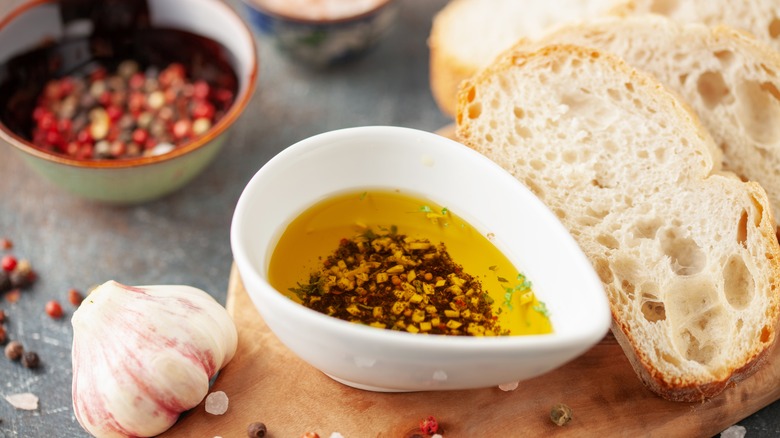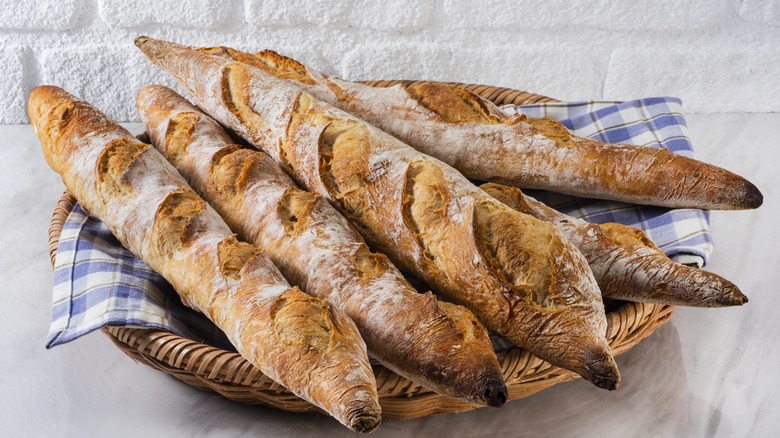Why Crusty Bread Is The Absolute Best For Dipping In Oil
The best part about dining out at a fine restaurant isn't always the impressive entrees or over-the-top desserts — it's the plate of bread and dipping oil served to tide you over until the rest of the food arrives. While no one is going to complain about the type of bread that lays before them, it's fair to say that some breads are, frankly, better-suited for dipping than others.
The ideal type of bread for sloshing around in that small bowl of oil is undoubtedly one with a solid ratio of crispy crust to soft interior. The reason for this is simple: Structural integrity. Bread that is far too soft and lacks any sort of rigidity (consider ho-hum sandwich bread) is going to disintegrate the second it hits that bowl of oil. It will leave you awkwardly trying to fish out that slice with your fork, and inevitably offer a bite that's far too oily to be enjoyable. Plus, there's something satisfying about getting that perfectly crusty bread, with a crunchiness that requires deft movement of your molars to break it apart.
You can find crusty bread everywhere you look
"Crusty bread" is a wide enough category that makes it easy to find. In Italian cuisine, you have your classic ciabatta, a bread that was initially invented to spite the French. It has an oblong shape with a fair ratio of crispy crust to pillowy soft interior. If you're looking for something in the realm of French cooking, you can always turn to the baguette or the boule. The former has an extended fermentation period, which maximizes the crispness of the outer coating. It's a go-to option if you prefer a greater ratio of crust to interior than can be offered by round loaves like the boule.
One of the best breads for dipping in oil, which packs in a lot more flavor than other varieties, is sourdough. If you are up for a challenge, try making your own fresh-baked sourdough bread and cook it in a Dutch oven. This pot is the key to a proper bake and color on your loaf. When the pot is closed, the loaf can steam and the starches in the bread can gelatinize, which gives you that unmistakable crust. Then, when the lid is removed for the last segment of cooking, the bread can brown perfectly.

